Abstract
The clinical and haemodynamic significance of the subaortic pressure gradient in patients with muscular (hypertrophic) subaortic stenosis (hypertrophic obstructive cardiomyopathy) has long been debated. In this report we summarize the evidence which indicates that true obstruction to left ventricular outflow exists in these patients. Rapid left ventricular ejection, through an outflow tract narrowed by ventricular septal hypertrophy, results in Venturi forces causing systolic anterior motion of the anterior (or posterior) mitral leaflets. Mitral leaflet-septal contact results in obstruction to outflow and the accompanying mitral regurgitation. The time of onset of mitral leaflet-septal contact determines the magnitude of the pressure gradient and the severity of the mitral regurgitation, as well as the degree of prolongation of left ventricular ejection time and the percentage of left ventricular stroke volume that is ejected in the presence of an obstructive pressure gradient. Early and prolonged mitral leaflet-septal contact results in a large pressure gradient, significant mitral regurgitation, as well as dramatic prolongation of the ejection time and a large percentage of left ventricular stroke volume being obstructed. Late and short mitral leaflet-septal contact results in little haemodynamic perturbation. Hypertrophic cardiomyopathy patients with obstructive pressure gradients are significantly more symptomatic than those without. Thus the obstructive pressure gradients in hypertrophic cardiomyopathy are of clinical as well as haemodynamic significance. To deny the existence of obstruction to outflow in patients with muscular subaortic stenosis is to deny these patients appropriate medical and surgical therapy.
Full text
PDF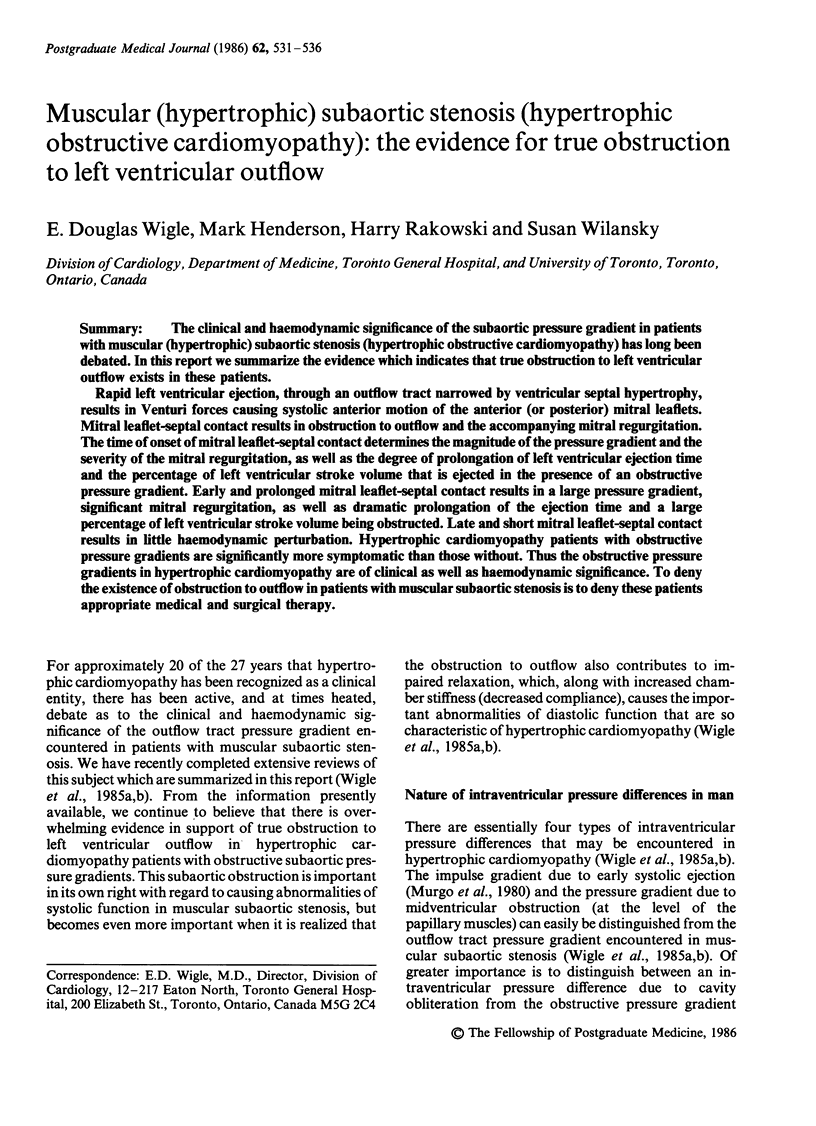
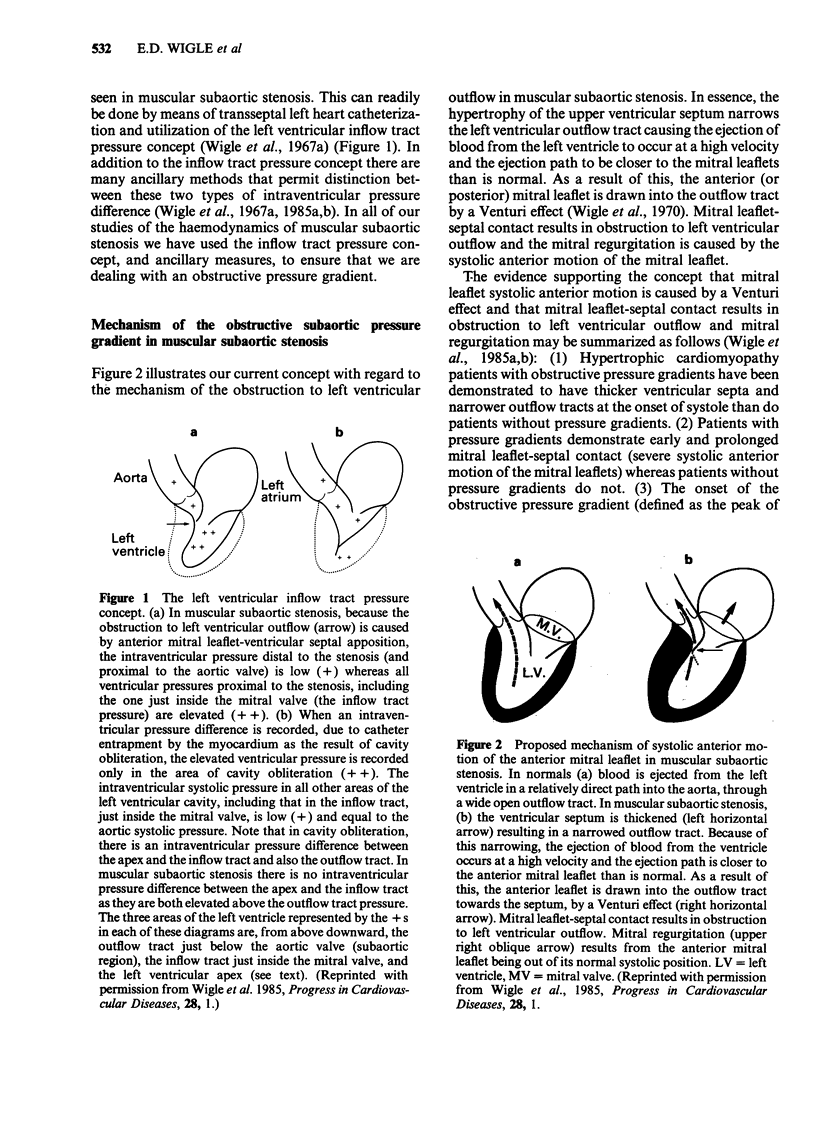
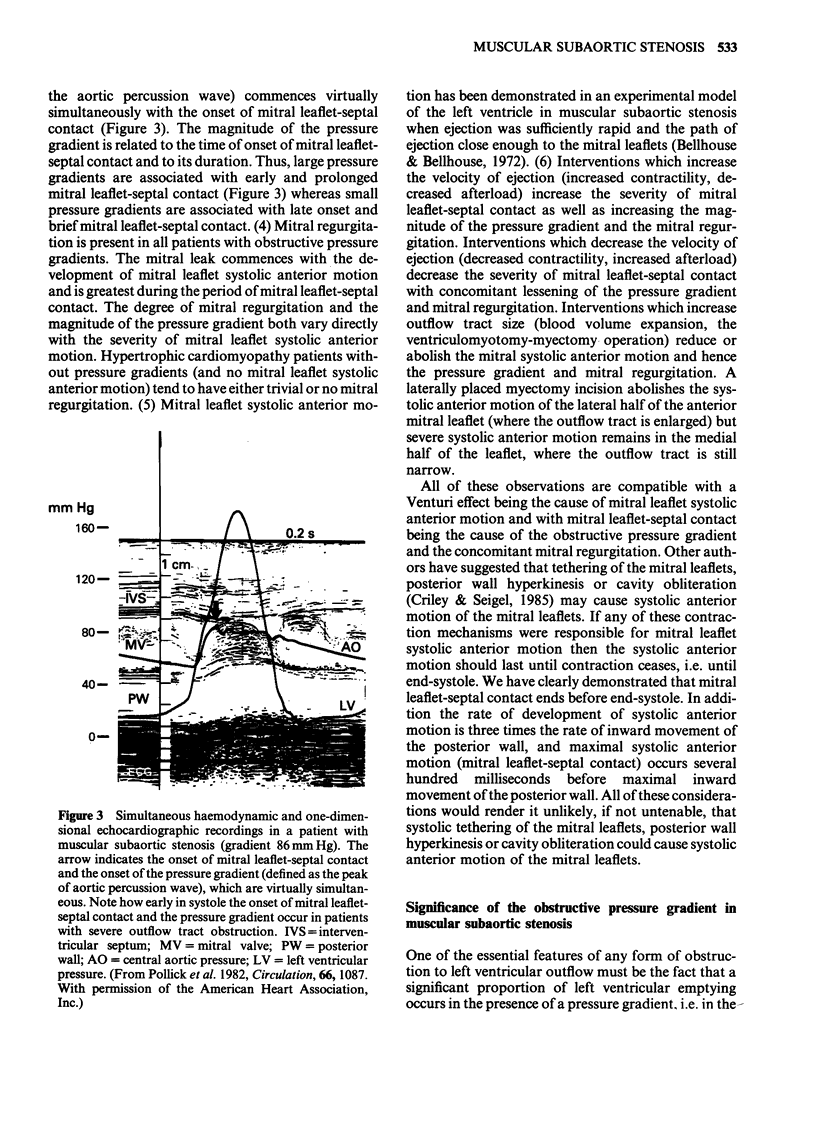
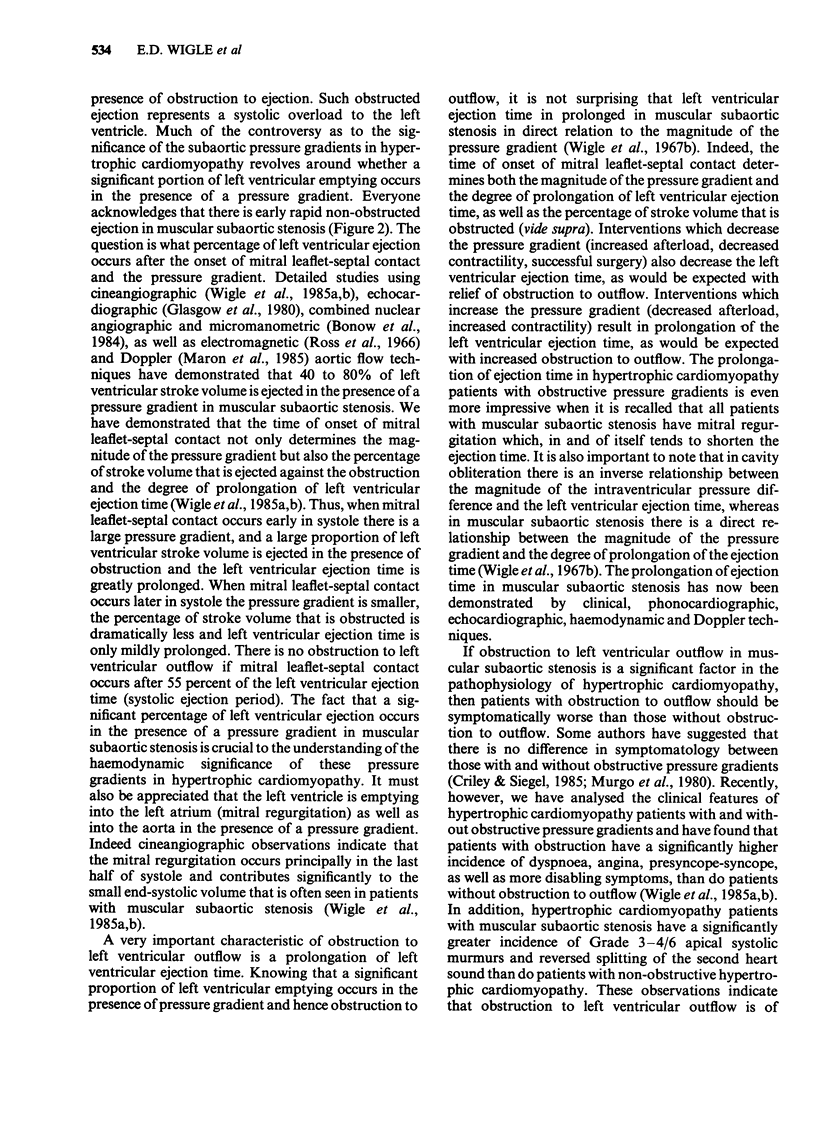
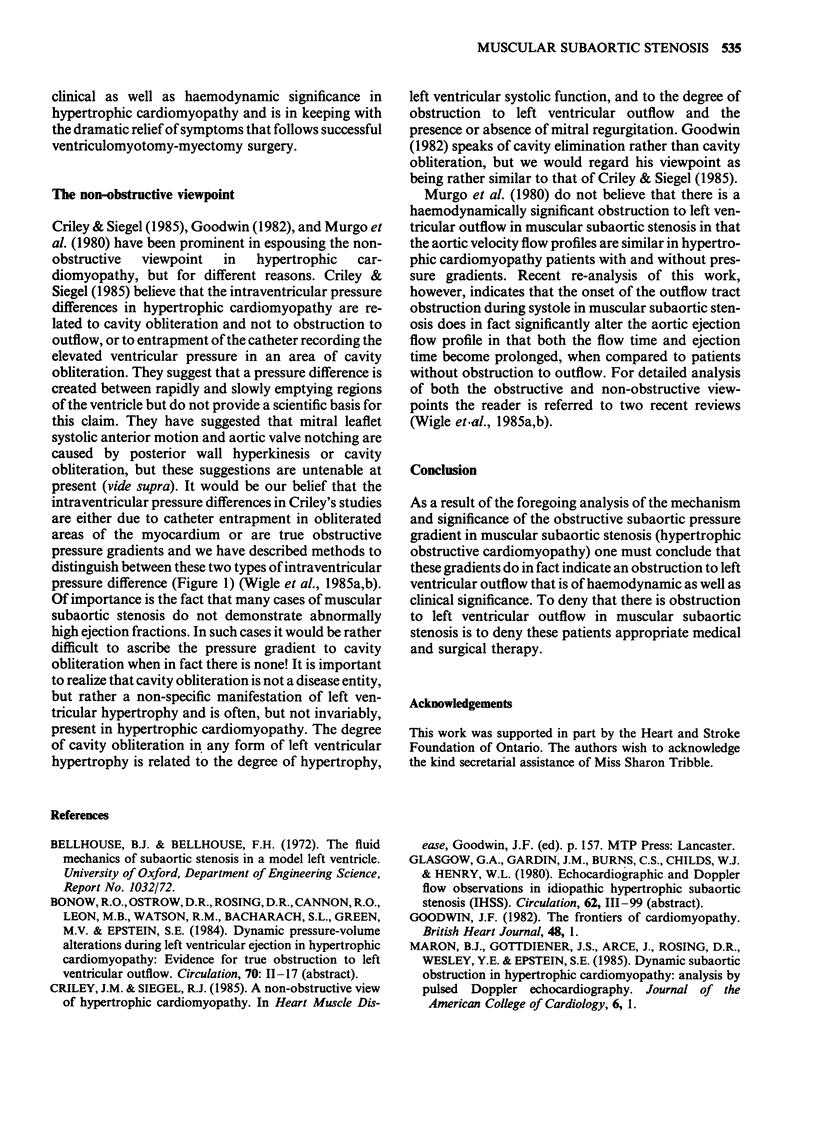
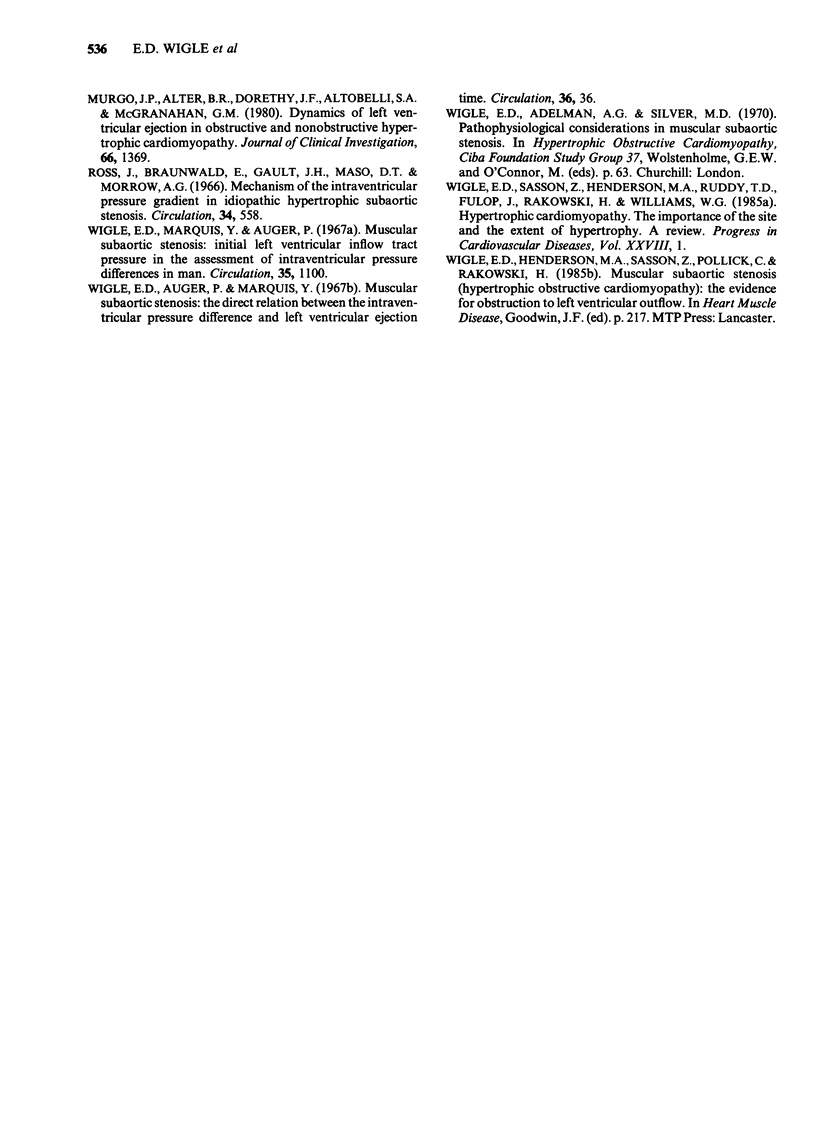
Selected References
These references are in PubMed. This may not be the complete list of references from this article.
- Goodwin J. F. The frontiers of cardiomyopathy. Br Heart J. 1982 Jul;48(1):1–18. doi: 10.1136/hrt.48.1.1. [DOI] [PMC free article] [PubMed] [Google Scholar]
- Maron B. J., Gottdiener J. S., Arce J., Rosing D. R., Wesley Y. E., Epstein S. E. Dynamic subaortic obstruction in hypertrophic cardiomyopathy: analysis by pulsed Doppler echocardiography. J Am Coll Cardiol. 1985 Jul;6(1):1–18. doi: 10.1016/s0735-1097(85)80244-8. [DOI] [PubMed] [Google Scholar]
- Murgo J. P., Alter B. R., Dorethy J. F., Altobelli S. A., McGranahan G. M., Jr Dynamics of left ventricular ejection in obstructive and nonobstructive hypertrophic cardiomyopathy. J Clin Invest. 1980 Dec;66(6):1369–1382. doi: 10.1172/JCI109990. [DOI] [PMC free article] [PubMed] [Google Scholar]
- Ross J., Jr, Braunwald E., Gault J. H., Mason D. T., Morrow A. G. The mechanism of the intraventricular pressure gradient in idiopathic hypertrophic subaortic stenosis. Circulation. 1966 Oct;34(4):558–578. doi: 10.1161/01.cir.34.4.558. [DOI] [PubMed] [Google Scholar]
- Wigle E. D., Auger P., Marquis Y. Muscular subaortic stenosis. The direct relation between the intraventricular pressure difference and the left ventricular ejection time. Circulation. 1967 Jul;36(1):36–44. doi: 10.1161/01.cir.36.1.36. [DOI] [PubMed] [Google Scholar]
- Wigle E. D., Marquis Y., Aucer P. Muscular subaortic stenosis. Initial left ventricular inflow tract pressure in the assessment of intraventricular pressure differences in man. Circulation. 1967 Jun;35(6):1100–1117. doi: 10.1161/01.cir.35.6.1100. [DOI] [PubMed] [Google Scholar]
- Wigle E. D., Sasson Z., Henderson M. A., Ruddy T. D., Fulop J., Rakowski H., Williams W. G. Hypertrophic cardiomyopathy. The importance of the site and the extent of hypertrophy. A review. Prog Cardiovasc Dis. 1985 Jul-Aug;28(1):1–83. doi: 10.1016/0033-0620(85)90024-6. [DOI] [PubMed] [Google Scholar]


